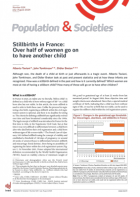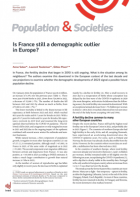
@@src2@@
One in thirty children in France conceived through assisted reproductive technology
Population and Societies
n° 556, June 2018
The world’s first ‘test tube baby’, Louise Brown, will turn forty on 25 July 2018. Elise de La Rochebrochard provides an overview of assisted reproductive technology (ART) in France since its inception. She specifies how many children conceived through ART are born in France each year, explains the methods used and the proportion of children born from gamete donation, and estimates the total number of births by ART from its beginnings.













